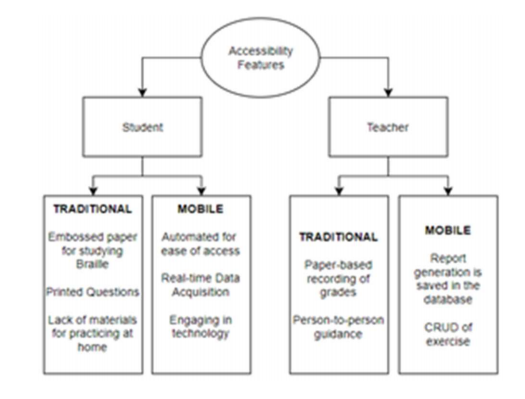 To lose one of your senses, or to be born without such faculties, means being left out of so much that society and culture have to offer—until your world is opened through another route like sign language or hearing aids or in the case of the visually impaired, Braille. Now, researchers from the Philippines are exploring the world of assistive technology further in ‘Braille3D: using haptic and voice feedback for braille recognition and 3D printing for the blind.’
To lose one of your senses, or to be born without such faculties, means being left out of so much that society and culture have to offer—until your world is opened through another route like sign language or hearing aids or in the case of the visually impaired, Braille. Now, researchers from the Philippines are exploring the world of assistive technology further in ‘Braille3D: using haptic and voice feedback for braille recognition and 3D printing for the blind.’
With the goal of helping the visually impaired to enjoy more access to technology and greater ease in learning Braille, the researchers began working on a mobile educational app to include both haptic and voice feedback. The app, meant for kindergarten students, is designed around learning Braille, but also 3D printing, and it functions with their use of their smart phones. Because the students are so young, most of the lessons are basic in terms of presenting elementary Braille lessons.
The app is made up of modules for learning the Braille characters and spelling, and users can review each character along with following example words—and then if desired, they can 3D print that word in Braille if a model is available. They can also learn to count to nine.
“The user can visit this module to learn and review the pattern for each Braille characters. Each letter shall have example words that the app will read to the student when prompted, as well as an option to 3D print that word example if there is an available 3D model for that word,” state the researchers. “The learning module for the numbers shall be presented in an orderly manner to also teach the user to count from zero to nine.
Teachers are also involved, assessing progress of the students and then assigning new exercises. They can add more example words, along with adding more 3D models into the mix. The students can 3D print through wireless communications or USB, as well as using a 3D printing application developed for this project.
“Since this process might be too complex for a kindergarten student, the teacher, or someone who has knowledge in 3D printing, must handle the 3D printing process,” state the researchers.
The potential for 3D printing in education is already being tapped around the world, with students of all ages enjoying design and printing labs, along with completing many different complex projects—and even items like prosthetics for others in need. But here, 3D printing and the use of educational models are serving as reading comprehension and literacy aids.
“Since blind people have difficulty in gathering/accessing information, 3D printing can be of aid to the visual impaired community,” state the researchers. “Moreover, 3D printed objects give the person the form and structure of the 3D model through the sense of touch. Thus, giving the justification of the relevance of 3D printing in the proposed topic. Other researches were focused on a tactile-based solution to improve touchscreen mobile interface exploration by blind users.”
The educational app, created on Android, consists of five phases, and students can select which exercises they want to do within their assigned work. They can 3D print models by choosing the machine of their choice within the systems that show up in their settings. The researchers used a da Vinci 1.0 AiO 3D printer for testing at the Philippine National School for the Blind (PNSB) and found that fabrication of a model like a rabbit took around four hours. Overall, the success rate for students engaging in this type of learning was found to be high.
In conclusion, the authors stated:
“The proponents have noted that the application is exceedingly beneficial to totally blind students because it helped them understand and gain familiarization to the Braille characters faster than the traditional devices they are using. The proponents recommend looking on more functionalities which can be beneficial to the development of this assistive technology.”
Many different 3D printing innovations have been geared toward the blind, whether in museum paintings that allow them to enjoy the artistic experience, creating campus maps for university students so they can find their own way around, or enjoying other types of educational models, and so much more. What do you think of this news? Let us know your thoughts! Join the discussion of this and other 3D printing topics at 3DPrintBoard.com.
[Source / Images: ‘Braille3D: using haptic and voice feedback for braille recognition and 3D printing for the blind’]




15 Replies to “Philippines: Researchers Create 3D Printing App for Learning Braille”
Comments are closed.